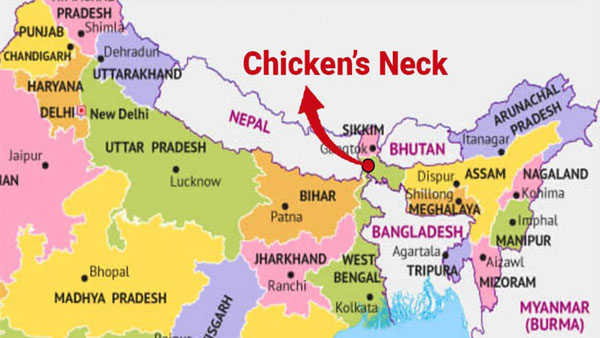By Satyabrat Borah
The question of whether newspapers, books, and magazines will survive in the near future is both timely and complex, as the world navigates an unprecedented digital transformation. These traditional forms of media have long been pillars of knowledge, culture, and communication, shaping societies and preserving ideas. However, the rise of digital platforms, social media, and instant information has cast doubt on their longevity. With smartphones, e-readers, and online content dominating modern consumption habits, can print media adapt and endure? This essay explores the challenges and opportunities facing newspapers, books, and magazines, examining their cultural significance, economic viability, and potential for reinvention in the digital age.
Newspapers have been a cornerstone of public discourse for centuries, delivering news, opinions, and stories to communities worldwide. In regions like Assam, local newspapers have played a vital role in preserving language and culture while informing readers about regional and global events. However, the digital revolution has disrupted their traditional model. Online news portals, social media platforms, and 24/7 news cycles offer instant updates, often for free, challenging the relevance of daily print editions. The decline in print circulation is evident globally, with many newspapers struggling to maintain readership as younger audiences turn to platforms like X or news aggregators. Advertising revenue, once the lifeblood of newspapers, has shifted to digital giants like Google and Meta, further straining print publications. Despite these challenges, newspapers possess unique strengths that could ensure their survival. Investigative journalism, in-depth reporting, and local coverage remain unparalleled in print media, offering a level of trust and credibility that many online sources lack. In Assam, newspapers like those in the Assamese language continue to serve as cultural touchstones, connecting communities to their heritage.
Books, too, face a transformative landscape. The rise of e-books and audiobooks has reshaped how people consume literature. Platforms like Amazon Kindle and Audible have made reading more accessible, allowing users to carry thousands of titles on a single device or listen to books on the go. While this has expanded the reach of literature, it has also raised concerns about the future of physical books. Bookstores, once bustling hubs of discovery, are closing in many parts of the world, unable to compete with online retailers offering lower prices and instant delivery. In smaller markets like Assam, where Assamese-language books hold cultural significance, the challenge is even more pronounced. Limited distribution networks and a growing preference for English-language content among younger readers threaten local publishing. Yet, physical books retain a timeless appeal. The tactile experience of turning pages, the smell of paper, and the aesthetic of a bookshelf are irreplaceable for many readers. Moreover, books remain a symbol of intellectual depth, offering immersive narratives and complex ideas that digital distractions often fail to match.
Magazines, with their blend of visuals, features, and niche content, face similar pressures. Lifestyle, fashion, and literary magazines have seen declining print sales as readers turn to blogs, YouTube channels, and social media influencers for similar content. In Assam, magazines focused on literature and culture, such as those inspired by the legacy of literary figures, continue to hold a special place, but their readership is shrinking. The high cost of production, coupled with competition from free online alternatives, makes it difficult for magazines to remain financially viable. However, magazines have an advantage in their ability to cater to specific audiences. Niche publications, whether focused on art, science, or regional culture, can attract dedicated readers who value curated content. The challenge lies in balancing print and digital formats to meet evolving consumer preferences.
The digital age presents both threats and opportunities for print media. One of the most significant challenges is the shift in consumer behavior. Modern audiences, particularly younger generations, prioritize convenience and immediacy. Social media platforms provide real-time updates, while e-readers and streaming services offer instant access to books and articles. In contrast, print media requires time and effort, whether it’s picking up a newspaper, visiting a bookstore, or subscribing to a magazine. This shift is particularly evident in regions like Assam, where urban youth are increasingly drawn to globalized content on platforms like Instagram and TikTok. The fast-paced nature of modern life leaves little room for the slower, reflective engagement that print media demands. Additionally, the environmental impact of print production, from paper usage to distribution, has raised concerns, pushing some consumers toward digital alternatives perceived as more sustainable.
Economic pressures further complicate the survival of print media. Newspapers and magazines rely heavily on subscriptions and advertising, both of which have been disrupted by digital platforms. Online ads are cheaper and more targeted, drawing revenue away from print publications. Similarly, the rise of self-publishing and free online content has reduced the profitability of traditional book publishing. In Assam, small-scale publishers of Assamese-language books and magazines face additional hurdles due to limited markets and high production costs. Many rely on government grants or cultural organizations to stay afloat, but these are not always sustainable. The decline in physical retail spaces, such as newsstands and bookstores, further limits access to print media, particularly in rural areas.
Despite these challenges, there are compelling reasons to believe that newspapers, books, and magazines can survive, albeit in adapted forms. One key factor is their ability to offer unique value. Newspapers, for instance, excel in providing in-depth analysis and local perspectives that online platforms often overlook. In Assam, regional newspapers remain a trusted source for community news, from local politics to cultural events. By focusing on hyper-local content and investigative journalism, newspapers can differentiate themselves from digital competitors. Similarly, books offer a depth of storytelling and intellectual engagement that short-form digital content cannot replicate. The resurgence of independent bookstores and literary festivals in some parts of the world suggests that physical books still hold cultural cachet. Magazines, too, can thrive by targeting niche audiences with high-quality, visually appealing content that digital platforms struggle to match.
Adaptation is key to survival. Many newspapers have already embraced digital editions, offering e-papers and subscription-based apps to reach wider audiences. In Assam, some publications have launched online portals that complement their print editions, allowing them to stay relevant in a digital-first world. Books are undergoing a similar transformation, with publishers investing in e-books, audiobooks, and interactive formats to appeal to tech-savvy readers. In Assam, efforts to digitize Assamese literature, such as creating audiobooks of classic works, are gaining traction. Magazines are experimenting with hybrid models, combining print issues with vibrant online content, including videos and podcasts. These adaptations allow print media to meet modern demands while preserving their core strengths.
Cultural and educational institutions also play a crucial role in ensuring the survival of print media. In Assam, organizations like the Assam Sahitya Sabha have historically supported Assamese literature through events, publications, and discussion groups. By promoting local authors and hosting literary festivals, such institutions can keep print media relevant. Schools and universities can further this effort by incorporating newspapers, books, and magazines into curricula, fostering a love for reading among students. In Assam, some colleges have introduced book discussion groups and literary clubs, encouraging students to engage with both Assamese and global literature. These initiatives not only preserve cultural heritage but also cultivate a new generation of readers.
The role of community engagement cannot be overlooked. Book discussion groups, literary festivals, and subscription drives can create a sense of belonging among readers, encouraging them to support print media. In Assam, community-driven initiatives, such as local book clubs or reading events, have helped sustain interest in Assamese literature. Similarly, newspapers and magazines can build loyal audiences by engaging readers through events, contests, and interactive content. Crowdfunding and subscription models, such as those used by some independent magazines, offer a way to involve readers directly in sustaining print media.
Technological innovation also offers hope. Advances in printing technology, such as print-on-demand services, can reduce costs and make small-scale publishing more viable. In Assam, this could benefit local publishers producing Assamese-language books and magazines. Augmented reality and interactive e-books could enhance the reading experience, blending the tactile appeal of print with digital interactivity. Additionally, the growing popularity of audiobooks and podcasts suggests that print media can evolve into new formats while retaining their storytelling essence.
The survival of newspapers, books and magazines hinges on their ability to balance tradition with innovation. While the digital age has disrupted their traditional models, it has also opened new avenues for engagement. By embracing hybrid formats, focusing on niche content, and leveraging cultural and educational support, print media can remain relevant. In Assam, where literature and language are deeply tied to identity, the preservation of newspapers, books, and magazines is particularly significant. These mediums carry the stories, ideas, and voices of a community, ensuring that its heritage endures. With collective effort from publishers, readers, and institutions, print media can adapt to the demands of the future while continuing to enrich lives. The legacy of print, from the pages of a newspaper to the chapters of a book, remains a powerful force, capable of thriving in the near future and beyond.




